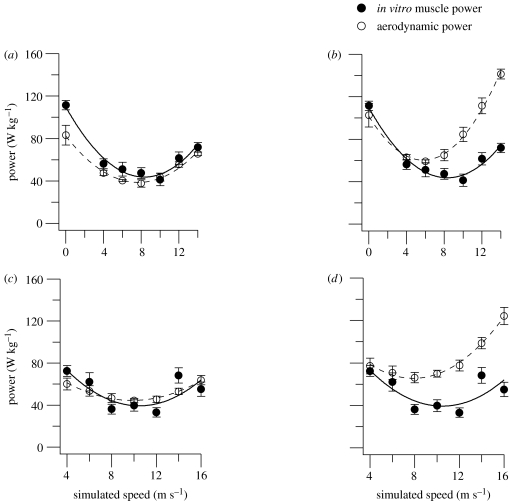Figure 2.
Pectoralis muscle power output and its relationship with flight speed. Power output was calculated using an aerodynamic model for a range ((a,c) minimum: CD,par 0.05 (Tucker, 2000), CD,pro 0.01 (Tobalske et al., 2003), k 1.0; Sb=0.00813Mb0.666 (Pennycuick et al., 1988); and (b,d) typical: CD,par 0.13 (Rayner, 1999), CD,pro 0.02 (Rayner, 1979), k 1.2 (Pennycuick, 1975), Sb=0.00813Mb0.666 (Pennycuick et al., 1988)) of aerodynamic coefficients from the literature and is compared with pectoralis muscle power output (mean±s.e.m.) determined in vitro, corrected for recruitment and intermittent flight. Data are from (a,b) zebra finch and (c,d) budgerigar pectoralis muscle. In vitro muscle power data are presented as mean±s.e.m. (budgerigars N=11, 9, 9, 6, 9, 5, 7 for speeds 4, 6, 8, 10, 12, 14, 16 m s−1, respectively; zebra finches N=7, 6, 3, 5, 4, 4, 7 for speeds 0, 4, 6, 8, 10, 12, 14 m s−1, respectively). Aerodynamic modelling was carried out on seven budgerigars at all speeds except 4 and 16 m s−1 where data are from four and six individuals, respectively. In zebra finches, modelling was performed on six individuals at all speeds, except 4 and 14 m s−1 where data are from four individuals.

